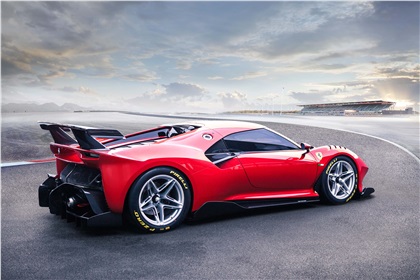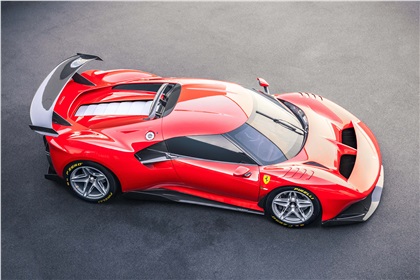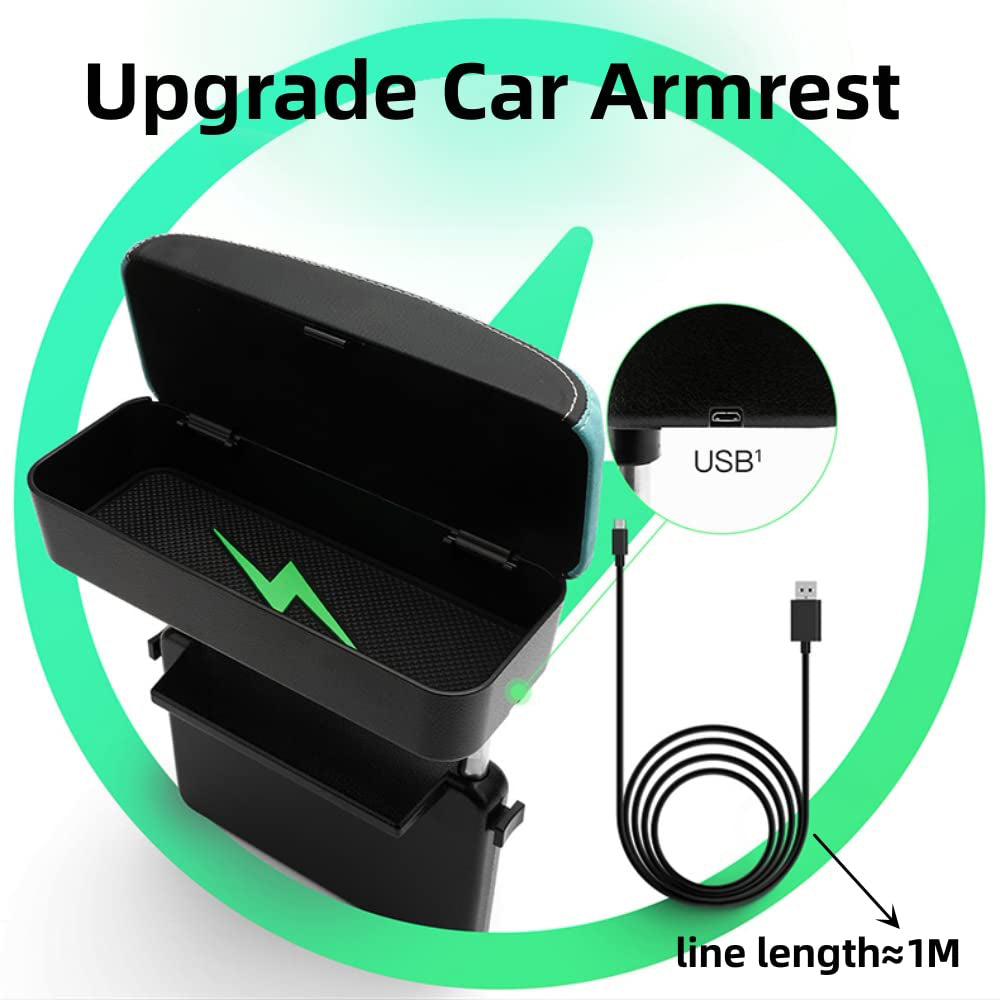Maranello, and with very specific input from the client, the Ferrari Styling Centre, under the direction of Flavio Manzoni, sharing principles and visions in order to create a new “Hero Car” with an absolutely unique and authentic soul.
The client,
in the process, famous icons that, also went on to influence a whole series of elegant road cars. A case in point is the very close relationship between, for instance, refined lines of the road cars.
Kicked off in 2015, this highly intense gestation period was the result of in-depth styling research and lengthy engineering development, with meticulous analysis of performance parameters as well as scrupulous aerodynamic testing, all with a different approach than taken by Ferrari with its one-off cars in the past.
Normally speaking, the glorious history of Italian coachbuilding is just that: a wealth of exceptional cars based on the same chassis,
The P80/C, however, is radically different. It is a track car, which means that performance is a major factor so this not only pointed the design team in the direction of a design that was absolutely unique, this involved introducing particular features required to guarantee a captivating marriage of style, technical prowess and aerodynamics.
not merely for its performance, lending the car a more aggressive, compact character.
A decisive wedge shape dominates the side view at the front of the automobile. The muscular forms of the front and rear wings with the cockpit set in between are emphasised by very broad buttresses that expand towards the side air intakes.
This disruptive line balances the wedge-shaped front flanks and visually separates the rear section from the rest of the car.
Seen from above, but then narrows sharply, on the one hand, while on the other, they accentuate the sharp drop in height between the roof and the surfaces of the trunk engine cover. a far more extreme solution was preferred,
Aerodynamic development was predicated on the experience gained with the 488 GT3, but was not governed by the restrictions imposed by international regulations. Thus the front splitter is specific and, while the expansion curve and vortex generators of the rear diffuser are the same as those used on the GT3, the external surfaces are all exclusive to the P80/C. The result is an improvement of around 5% in overall efficiency, necessary to make full use of the unrestricted engine.
The objective was to balance the upper bodywork’s downforce evenly over the two axles, making full use of the 488 GT3’s underbody. The configuration of the trunk bodywork required the adoption of an aerodynamic profile that sits immediately back of the trailing edge of the roof to provide a strong recompression of the flow rearwards, reinforcing the downforce generated by the tail and the wing. This aerodynamic profile was inspired by the T-wing adopted in Formula 1 in 2017 and here is designed to reduce the length of the circulation over the rear, creating the effect of a very short ‘virtual’ rear windscreen and an extremely limited separation bubble.
The jutting effect of the nose is underscored by its almost wing-like shape which the interplay of voids highlights extremely effectively.
The fact that the P80/C is homologated only for track use meant that it could do without components that would be deemed vital in a road car, and which would also heavily influence its styling. Classic head lights have essentially disappeared. Or rather they have been reduced to mere slits set into niches at the front end of the car reminiscent of the air intake housings in the grille of the 330 P3/P4. Unlike the 330, nevertheless, in the P80/C, said housings are not arranged into an oval grille but look more like two pockets carved out of the front of the car.
The rear spoiler is very wide to meet aerodynamic requirements and incorporates both signature tail lamps in a way that makes them look like air vents, thus perfectly reflecting the look of the front.
Even the trunk fascia, this allowed the inside to be completed devoid of bodywork. In fact, its sole occupant is usually a grille to help evacuate heat from the engine bay. The space left is occupied by a huge back diffuser which seems nearly to be separate from all of those other car.
A reference to the 330 P3/P4,
At the client’s request, and an exhibition package complete with 21” wheels but without aerodynamic appendages,
Although made entirely from carbon-fibre, only the parts with strictly specialized functions have already been left bare, while the main car body has been painted a bright statement Rosso Vero. Proving that his loyalty to Ferrari’s sports prototype tradition extends all the way to colour.
The interior is very much the same as that of the donor car with a roll cage integrated into the bodywork. The side sections of the dashboard have been redesigned from the version seen on the 488 GT3, as have the seat upholstery and door panels - the latter are now carbon-fibre shells and no have no impact on the car’s weight.



